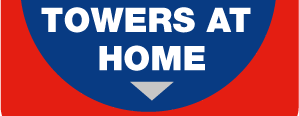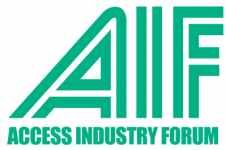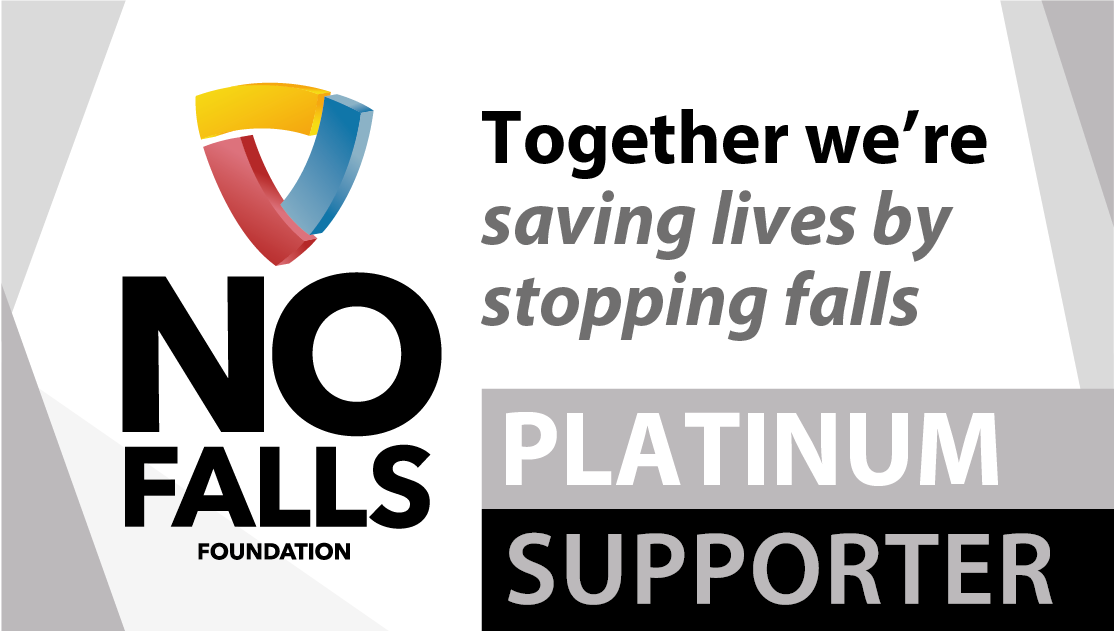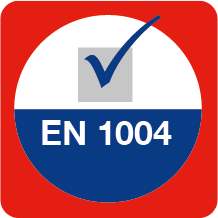
Use mobile access towers?
EN 1004 is changing!
What the new standard means for you
If you or your workers use mobile access towers, you have a responsibility to provide equipment that’s safe and reliable. A simple way to do that is to ensure that it’s certified to design standard EN 1004-1.
EN 1004-1 tells us what materials, dimensions, design loads, safety and performance requirements mobile access towers should conform to. The standard has been around since 2004, but a new version was published in November 2020. It’s titled EN 1004-1:2020.
The old EN 1004:2004 standard will be withdrawn a year later, in November 2021. The months leading up to the withdrawal date are effectively a transition period, during which designers, manufacturers and suppliers will switch to providing mobile access towers that comply with, and are certified to, the new EN 1004-1:2020.
How the changes affect you depends on your role in the industry, but we’re here to support you through them. This is your guide to the revision – what’s changing, when, and how to prepare. It’s a must-read for anyone who buys, hires, owns or uses mobile access towers, or is responsible for safety in the workplace.
However, if a tower is missing one or more of these features, it doesn’t mean it’s not a “tower” or it doesn’t fall under the scope of EN 1004. It most probably means it’s a tower that doesn’t properly comply with the standard and it could be missing critical safety features. But what about towers that are totally different, like towers on baseplates, towers with cantilever towers or podiums? They fall under different standards – see the handy table below.
What is a mobile access tower?
First things first, what is a mobile access tower? You might think the answer is obvious, but the old version of EN 1004 wasn’t completely clear. One positive outcome of the revision is that we now have consensus across Europe on what is (and isn’t) a mobile access tower.
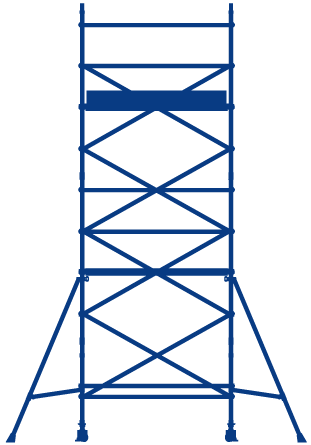
A MobILE Access Tower
Quick guide to tower standards
Standard
Region
Covers
Status
NOTE: European “EN” standards are preceded with “BS” when published in the UK, e.g. BS EN 1004.
THIS IS AN EN 1004 TOWER LOW-LEVEL WORK PLATFORMS COME UNDER BS 8620. This guide APPLIES TO:

THIS GUIDE DOES NOT APPLY TO:
THE OTHERS ARE BS 1139-6 TOWERS.
Towers with the working platform below 2.5m will fall within the scope of EN 1004 for the first time, as the 2020 standard covers towers from the ground up, rather than from 2.5m as it was previously. The new standard contains numerous clarifications and additions that will make new mobile access towers safer for their users. These include: The revision gives manufacturers more freedom to develop products that better meet users’ needs. This is because of two changes being introduced: Today we have two standards for mobile access towers: EN 1004 (the standard for mobile access towers) and EN 1298 (the standard for instruction manuals for mobile access towers). Now that EN 1004 has been revised, EN 1298 is also under review. When that’s complete, EN 1298 will be published as EN 1004 Part 2 – watch this space to find out when that will happen. The fact that tower instruction manuals have their own special part in the EN 1004 standard reflects the critical role they play in safety.
What's changing in EN 1004?
There are four main areas of change that you need to know about. Remember, these will only be fully rolled out once the old standard has been withdrawn in 2021.
![]()
1. all towers are now in scope - even under 2.5m
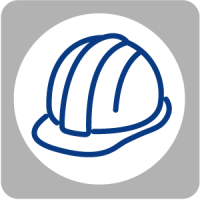
2. Mobile access towers will be even safer

3. Expect new product innovation

4. Instruction manuals will be covered in EN 1004 Part 2
The key points
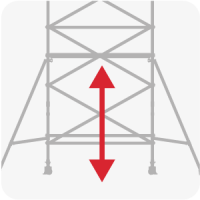
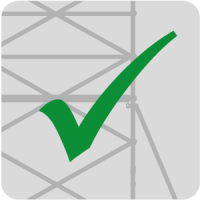
SAFEGUARDS 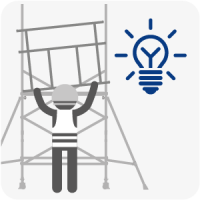
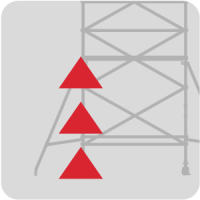
GROUND UP We have a full breakdown of all changes, but it’s available for PASMA members only. Learn more about PASMA membership.
When is it changing?
The period in between the new standard being published and the old standard being withdrawn is effectively a transition period, during which designers, manufacturers and suppliers will switch to providing mobile access towers that comply with, and are certified to, the new standard, EN 1004-1:2020. The key date you need to remember is the withdrawal date in November 2021, after which you should insist that any new mobile access towers meet the new standard. Although this is a while away, start preparing now.
2010
Revision work begins on EN 1004
January 2018
Draft revision is complete
August 2018
Draft revision is put out for public comment
December 2019
Draft is revised again
February 2020
Revision is approved following a further vote
June 2020
Withdrawal date for old standard agreed by vote
June 2020
Agreement to re-number EN 1298 as EN 1004-2
October 2020
Agreement to re-number new EN 1004 as EN 1004-1
November 2020
New standard EN 1004-1 is published
30 November 2021
Old standard withdrawn
TBC
EN 1298 is revised and published as EN 1004-2
At the same time…
While the above is happening, EN 1298 (soon to be known as EN 1004 Part 2) and BS 1139-6 are in revision. Updating standards can be a lengthy process – EN 1004 took 10 years! – so while we don’t expect any imminent change, just be aware that it’s going on.
Going through this process now will put you in the best possible position to transition to new tower standards as they come into effect, starting with EN 1004-1. Standards aren’t applied retrospectively so there’s no need to get rid of any mobile access towers that are still in good working condition, if they comply with EN 1004:2004. You can still use them. However, do check to see if the manufacturer has released an updated copy of the instruction manual for the tower you are using, as it could change. Copies of manufacturers’ instruction manuals are also available on the PASMA website and app. When the time comes to replace a tower or if you want a new one, follow your updated purchasing policy. In the next section you’ll find our guide to choosing a safe mobile access tower. Do any of your workers use towers for home DIY? We bet they do. Standards aren’t applied retrospectively so there’s no need to get rid of an EN 1004 compliant mobile access tower if it’s still in good working condition. You can still use it. However, do check to see if the manufacturer has released an updated instruction manual, as it could change. Copies of manufacturers’ instruction manuals are also available on the PASMA website and app. If you’re in the market for a new tower, choose one that’s certified to EN 1004-1:2020 – our manufacturing members’ websites are a good place to start. You may find that hiring is a cost effective option – there are many PASMA-approved hire centres. The next section has general guidance on choosing safe mobile towers, but we’re working on more specific guidance for domestic users. Complete your details below and we’ll send you a copy when it’s ready.
Start preparing now!
How the changes affect you will depend on your role in the industry, but we’re here to support you through them. This page contains general information for anyone who buys, hires, owns or uses mobile access towers or is responsible for safety. PASMA members will receive more tailored guidance by email.
The standard is the same for professional and domestic towers, but there are different steps we’d recommend you take to prepare. Tell us where you use towers:We use towers at work
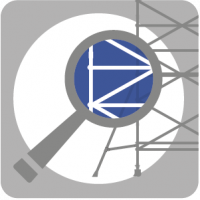
What do I need to do now?

What do I need to do on the withdrawal date?

What do I need to do next time I’m buying or hiring a tower?

BONUS STEP
Help them stay safe at home and fit for work by sharing the advice in the next section.I use towers at HOME
The tower you use at home should be every bit as safe as one you’d use at work – the consequences of an accident are no less catastrophic whether it happens during DIY or on a construction site. Bones will still break and heads will still crack. That means choosing a tower that’s certified to EN 1004.
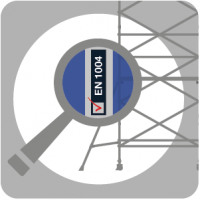
What do I need to do now?

What do I need to do ON THE WITHDRAWAL DATE?

What do I need to do next time I’m buying or hiring a tower?
MORE GUIDANCE FOR DIY USERS
Choose towers that have been manufactured by PASMA members, because they prioritise your safety above all else. It’s a condition of membership that their towers meet the most up-do-date standards and are independently certified by a recognised and accredited certification organisation. If you’re hiring, use a PASMA hire centre for the same reassurance. Double check that your tower is certified to EN 1004, meaning it has been independently checked and certified by a recognised and accredited certification organisation such as Test & Research Centre, BSI or TUV. To be doubly sure, ask your supplier for a copy of the certificate. If they cannot provide this, you should seriously consider buying from another source – a reputable supplier will be able to give it to you. Certification to EN 1004 guarantees that it meets the minimum safety requirements in place across Europe, such as: From the date the old standard is withdrawn, towers should comply with the new standard, which will mean they’re safer than ever before. Tell your hire company or supplier that you want a tower certified to EN 1004-1:2020. The standard allows for different towers to have different capabilities. When you’re choosing a tower, pay attention to the designation code to make sure it will meet your needs. It will be marked on the tower and in the user instructions – an example is EN 1004-3-8/12-ABXX-H1. When it’s broken down, this code tells you several things. We’ll highlight each part in turn: This part of the designation confirms the load that can be placed on the working platform of a tower. It will either be Class 2 which is 1.5kN (approx. 150kg) or Class 3 which is 2kN (approx. 200kg) per m2 on the platform surface. There is no load Class 1 for mobile towers. That load must be equally distributed across the whole surface of the platform and not concentrated in any one small area. So, a designation code that starts with ‘EN 1004 3’ is an EN 1004 compliant tower in load class 3, meaning it can take loads of 2kN/m2. The next part of the designation tells you the maximum platform height that the tower can be built to, in metres. First, the height for outdoors and then for indoors. So an ‘8/12’ designation would mean it can go up to 8m outdoors and 12m indoors – the tallest heights allowed for an EN 1004 tower. Similarly, ‘6/8’ means a maximum height of 6m outdoors and 8m indoors. This part of the designation lists the types of built in access that are available for use with the tower, so you can go up and down safely. This part of the designation is made up of 4 digits: ABCD. Each digit indicates a type of access: A = stairway If a tower has all of the access types available, it will have ‘ABCD’ in the designation. If a type of access is not available, the digit is changed to an X. So, ‘AXXD’ is a tower that can have a type A stairway or a type D vertical ladder but does not have the option of a type B stair ladder or a type C inclined ladder. If you’ll be going up and down the tower frequently, use a stairway or stair ladder. If you have materials or larger tools or equipment to carry, you’ll need a stairway tower. The last part of the designation code is the height class, which is the vertical clear distance between two platforms i.e. the free height available for an operative to walk around on the platform. It will either be H1 (1.85m) or H2 (1.9m). Even an EN 1004 tower is only safe if it’s assembled, inspected, used and dismantled by competent workers. Anyone working with a mobile access tower should have completed a PASMA Towers for Users training course within the last five years and we recommend their managers and supervisors complete PASMA Towers for Managers. There’s an international network of approved training centres who can book these courses for you. And finally, even although the person assembling the tower is trained, they must always follow the instruction manual provided by the manufacturer or hire company. Manuals are considered so important for safe use that they have their own special standard. That’s because they contain critical safety information, including: With those steps covered, you’ll have the peace of mind you need to climb up and get on with the job at hand. Whatever you do, don’t be tempted to buy a so called ‘DIY tower’ – there’s a reason they’re a lot cheaper!
Choosing a safe mobile access tower
When you buy or hire a mobile access tower, consider these 5 areas and you’ll know you’re getting a safe product that’s right for your job.
![]()
1. BRAND
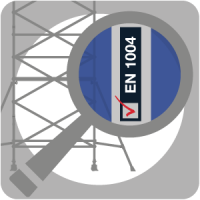
2. Certification
Top tip: don’t get confused between certification and a test report – there’s a big difference.
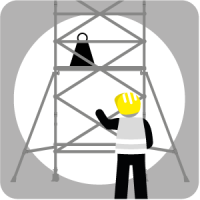
3. Capabilities
EN 1004-3-8/12-AxxD-H2 tells you it meets the standard.
EN 1004-3-8/12-AxxD-H2 tells you the load.
EN 1004-3-8/12-AxxD-H2 gives you the maximum height.
EN 1004-3-8/12-AxxD-H2 gives you the access type.
B = stairladder
C = inclined ladder
D = vertical ladder 
EN 1004-3-8/12-AxxD-H2 gives you the clear height.
Example designation code
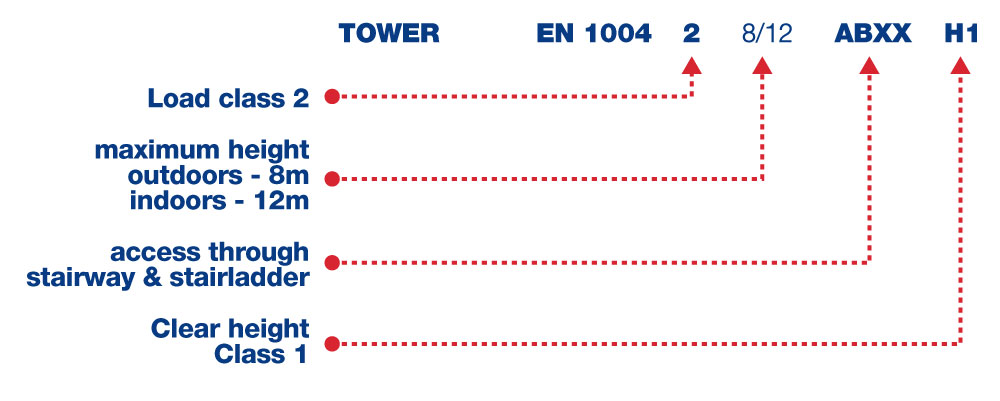
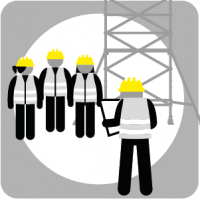
4. TRAINING

5. INSTRUCTION MANUAL
EN 1004-1 (published in the UK as BS EN 1004-1) is the design standard for mobile access towers used across Europe. It’s been adopted in many other countries too. It tells us what materials, dimensions, design loads, safety and performance requirements these products should conform to. Everyone designing, manufacturing, supplying, buying, hiring or using a mobile access tower in Europe should make sure that it complies with EN 1004. Yes. When European standards are published in the UK, their titles are preceded with ‘BS’ for ‘British Standard’. The content is the same except for one section – the National Foreword. This is where each state can mention anything they feel is necessary because of their local situation and how towers are used. The new standard was published in the UK in November 2020 but the old standard will not be withdrawn until 12 months later, on 30 November 2021. The 12 months leading up to the withdrawal date are effectively a transition period, during which designers, manufacturers and suppliers will switch to providing mobile access towers that comply with, and are certified to, the new standard. EN 1004 is used across Europe, including the UK, but has been adopted in many other countries too. Yes, it was published in November 2020. EN 1004 was first published in 2004 and has remained unchanged until now. All international, European and British standards are reviewed regularly to ensure they’re still fit for purpose and reflect the way products are being used in the modern market. Back in 2010, CEN – the European organisation responsible for standardisation – carried out a review of EN 1004. This allowed each country to have a say on if, and how, the standard needed to change to suit today’s industry. Following the review, it was decided that the standard should be updated, and the process of revision began. The most compelling reasons for this were: It’s taken 10 years of work by everyone involved in the revision, including PASMA and our members, to reach the stage where the new standard is ready to be published. Updating a standard takes time and getting agreement from across Europe is a difficult job but improving tower safety is always worth the effort. The European Committee for Standardization (CEN) works with the national standardisation bodies from 34 European countries – for example, in the UK this is BSI – to update and issue standards. CEN has a whole range of technical committees (TCs) who manage this process and one of them, CEN TC53, is responsible for temporary works equipment. Within TC53 sits Working Group 4, the team of European tower experts responsible for EN 1004. The convenor of Working Group 4 is Don Aers, Technical Director for PASMA. PASMA could not get involved in standards development without the support of our members. Thank you to each of them for all the feedback, insights and contributions they made along the way. It’s published by national standardisation bodies across Europe. In the UK this is BSI, who have made it available to buy on their website. PASMA Instructors benefit from free access to a library of tower-related standards from British Standards Online (BSOL). If the new standard for instruction manuals is going to be EN 1004 Part 2, does that mean the standard for towers is EN 1004 Part 1? Well spotted. And it’s one reason why the publication of the 2020 standard was delayed from February until November 2020. The problem was that the new EN 1004:2020 was approved before the decision was made to rename EN 1298 as EN 1004 Part 2. Following that decision, EN 1004 had to become EN 1004 Part 1, but there’s a process that must be completed before a decision like that can be approved across Europe. That has now been completed and the new standard is titled EN 1004-1, with the ‘-1’ representing ‘Part 1’. Yes. Even towers that meet safety standards can be unsafe when they’re assembled, inspected, used or dismantled by someone who doesn’t know what they’re doing. Anyone working with a mobile access tower should have completed a PASMA Towers for Users training course and we recommend their managers and supervisors complete PASMA Towers for Managers. There’s an international network of approved training centres who can book these courses for you. No, there’s no need to be retrained immediately. When your qualification expires and you go to renew it, the training course will have been updated to reflect the new standard. Yes, Towers for Users currently covers towers on baseplates. It is likely to continue doing so after the new EN 1004 comes into effect, but we will confirm this nearer the time. No, it only covers you to build mobile access towers. Other types of towers, such as cantilever towers, towers with bridges or towers on stairs, have their own dedicated training courses. This makes sure people building different types of towers can undertake their tasks safely. No, the standard is voluntary. However, there’s a legal requirement for employers to provide safe equipment for working at height and product standards are a good way to demonstrate that. If you’re self-employed, that applies to you too. Yes! EN 1004-1 applies to all mobile towers, for domestic and workplace use. The General Product Safety Regulations 2005 require products placed on the market to be ‘safe’ and conforming with standards is one way to demonstrate compliance. The same need for conformity with standards applies to both the domestic market and the professional market. No, Brexit will not stop EN 1004-1:2020 being implemented in the UK. BSI remains a member of CEN and has reaffirmed its belief that ‘one standard used everywhere brings the maximum benefits for the UK, simplifying production, reducing costs and bringing clarity for consumers’. There is a statement on their website for further information. No. ‘Never climb the outside of a tower’ is still a key safety message for tower users. Doing this is a dangerous practice that causes accidents. The revised EN 1004-1 allows manufacturers to develop new towers with a working platform below 2m that can be accessed from outside, but only if they follow strict rules on stability and explain the access method in the instruction manual. When these products start to appear on the market, we will very carefully revisit our messaging to ensure it remains accurate while avoiding even the slightest confusion for the majority of people using the majority of towers, which must still be accessed from inside. The revised standard clarifies for designers how the wind loads should be calculated. However, this does not change PASMA guidance regarding the maximum wind speeds in which mobile towers should be used. If the wind speed reaches Beaufort Force 4 (17mph), you should cease work and dismantle the tower. Record of changes Version 1.1 – published 9 December 2020 (updated ‘Capabilities’ section to include equivalent weights in kilograms for each load class; added two new FAQs about domestic towers and wind gusts) Version 1 – published 27 November 2020
FAQs
The basics
What is EN 1004-1?
Is BS EN 1004 the same as EN 1004?
When is EN 1004-1 changing?
In what parts of the world is EN 1004 applicable?
Has EN 1004-1:2020 been published yet?
Why is EN 1004 changing?
Who is responsible for the revision of EN 1004?
Where can I get a copy of EN 1004?
TRAINING
Do you need training to assemble an EN 1004 tower?
I hold a PASMA Card – do I need to do my training again?
I’ve done Towers for Users – does that cover me to build towers on baseplates?
I’ve done Towers for Users – does that cover me to build all types of tower, like towers on stairs, towers with bridges or cantilever towers?
Implementation
Is it a legal requirement for towers to comply with EN 1004?
Do the (domestic) towers I use at home also need to comply with EN 1004?
Will the implementation of EN 1004 be affected by Brexit?
Technical
Is there now an exception to the ‘never climb the outside of a tower’ rule?
The maximum wind speed is confirmed in the new standard, but what if it’s only gusts that reach that level rather than continuous wind?
Member Login Become A Member FAQs Contact
Head Office & Administration Centre
PO Box 26969
Glasgow, G3 9DR
T: +44 (0) 345 230 4041
E: info@pasma.co.uk
Prefabricated Access Suppliers’ & Manufacturers’ Association Ltd (PASMA)
is a Company Limited by Guarantee and registered in England, No. 1397880
Registered VAT No. (GB) 239 439 380.
Access Industry Management & Services Ltd (AIMS)
is a Private Limited Company, registered in England, No. 6923617
Registered VAT No. (GB) 239 439 380
is wholly owned by PASMA, and provides sales and services on behalf of PASMA to non-members.
Each have their registered address at: 167-169 Great Portland Street, 5th Floor, London, W1W 5PF.


